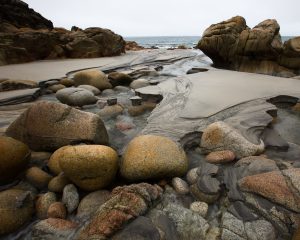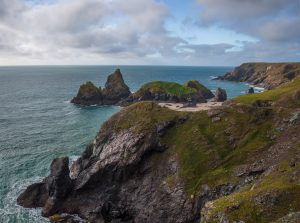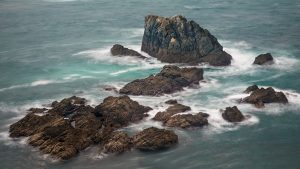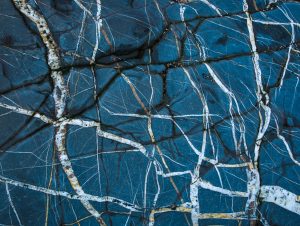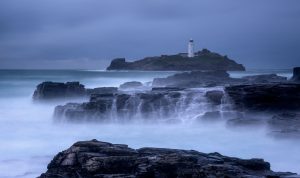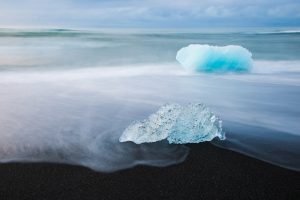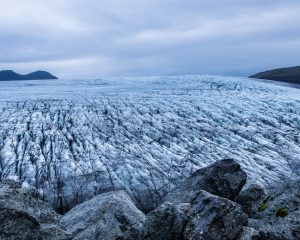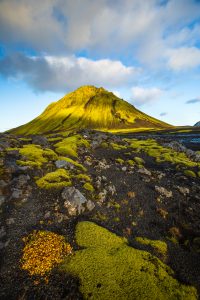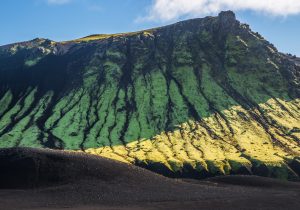Dramatic landscapes in Cornwall arranged by Wild Nature Fotoresor together with Patrik Larsson
The base for the week was a warm and friendly guesthouse in Penzance
The first morning started with a trip to St Michaels mount just before dawn. On arrival the tide was just starting to recede and the mount could be seen at some distance completely surrounded by water. Slowly but surely, as the tide turned, a colourful stone causeway began, as if by magic, to reveal itself
The journey continued northward along the coast to Porthnanven in the Cot valley. The tide was quite far out and a wonderful world of large colourful boulders and running water rivulets lay exposed before us
Continuing further along the North Cornwall coast to Godrevy, accross the bay from St Ives, for the last stop of the day. The wind was picking up and huge waves were forming as the tide came rushing in. Two important lessons were quickly learned; the tide comes in quickly and relentlessly and lenses and filters have to be constantly washed and dried from the sea spray. This was learned first hand after a thorough drenching in cold atlantic water!
Back to the guest house for a change to dry clothes, lens and filter washing and camera drying before a rewarding pub meal and a pint or two of bitter.
The next day started early in order to see the break of dawn at mousehole just south west of Penzance
The journey continued to one of Cornwalls renowned beaches at Kynance cove. The weather had brightened and we had to wait some time for clouds to appear. Apparently we were lucky to find a nearly deserted beach. A few days earlier the place had been taken over for a Bollywood production.
The day finished with a visit to Britains southern- most projectory, Lizzard point
From the start the third day promised to be difficult. The weather gods forecasted relentless rain together with gale force winds. The first point of call was Trebarwith beach with its rugged, patterned rock formations .
Unfortunately the predicted weather engulfed us in heavy rain and strong winds so we hurriedly drove on to Crackington Haven. This was a little harbour town with a very narrow opening to the harbour The rain had eased slightly but the wind was still a serious challenge. Photographing in the harbour bay was impossibe, it was hard to stand in the wind let alone hold a tripod still. Slightly above the harbour we found some shelter from the wind and could look across the bay
The next attempt to photograph was at Duck pool but the expression ”horizontal rain” took on a new meaning! We gave up and retired cold and dripping wet to a little cafe. After another attempt at duck pool we returned to the cafe once again. An older couple who had seen us earlier asked us why on earth we did not come in the summer instead ..they were obviously not hardened photographers!
The final stop of the day was Sandy Mouth. Expectations were not high due to the weather forecast. Luckily the rain had now died down to the occasional shower whilst the wind continued unabated.
The beach was a treasure trove of fascinating rock formations and these could be studied in lee of the wind
The evening turned out to be fantastic with the foaming incoming tide and conditions were perfect for long exposures in the blue hour
After this trying day it was good to get home to dry out both ourselves and equipment and, of course, to finish off in the local for catch of the day and a couple of pints.
The final day began again at the little harbour at mousehole for yet another sunrise
We then continued to Britains most westerly point, Lands End, where we experienced heavy showers and the ever present gale force wind. It took a lot of perserverance to achieve any half decent result without raindrops
The next stop was at the old tin mines at Bottalack point. This area is famous for the Poldark television series. The wind had now increased even further but we eventually found a trench, a bit like a world war one dugout, where we could get some lee from the wind.
The final stop was a return to Godrevy where the sea was raging
The final shot for this wonderful windy week was of the Godrevy lighthouse

